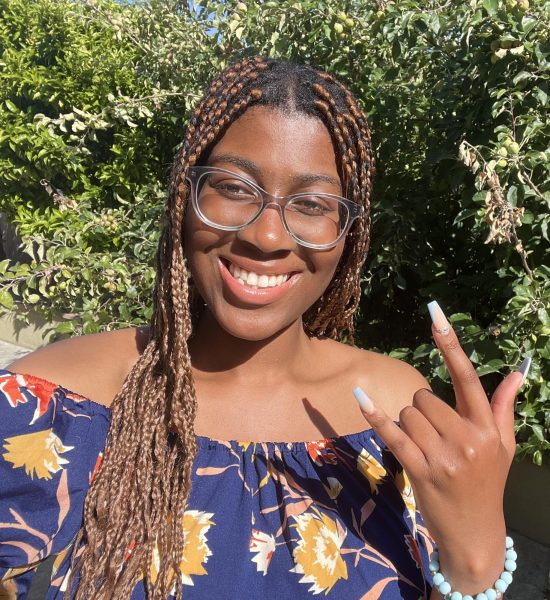Fashion inspiration from the past
Photo by Luis Montejo on Unsplash
Vintage clothes are coming back!
Styles that were popular in the 20th century
From start to finish , the 20th century was a rollercoaster. Defined by technological advancements, space exploration, both World Wars, and the Cold War, the world rapidly changed for better or worse. And so did the fashion trends.
1900s-1910s
In the 1900s, women’s fashion didn’t deviate much from the trends of the last century. They still wore long ornate dresses with poufy sleeves that hugged the curves molded by their corsets. However, their figures were eventually allowed to appear more natural later in the decade and following. High waists and slim silhouettes were in with the addition of simple clothing and tapered skirts in the 1910s.
Men’s clothing had remained relatively unchanged as they continued to wear mainly suits. In the 1900s, tuxedos and tailcoats were often paired with waistcoats and bow ties. The range of suits men wore in the 1910s expanded to include lounge suits, three-piece suits.
According to Fashion History Timeline, “Children continued to be dressed as mini-adults with many of the styles found in menswear making their way into children’s wear. Themes found in fashion for both boys and girls included light colors and stiffly starched material.” (https://bit.ly/38R7n6F)
1920s-1930s
W omen’s fashion in the 1920s looked drastically different from two decades earlier. Dresses were comparatively minimal in terms of design and decoration as “the flapper” style took off. Due to this simple style, clothes were easier to create at home. In the 1930s, women’s fashion made a return to traditional femininity with cinched waists and skirts that hugged their narrow hips at an angle.
Men, in the 1920s, wore button suit jackets, Oxford bags (wide-legged pants), and plus-fours for daywear and to play sports like tennis. Their fashion grew even laxer in the 1930s as they wore casual wear like sweaters and collared shirts that were more practical during the day.
Girls wore loose dresses with simple designs , but that would rapidly change as the decade progressed. Young boys tended to wear blazers and sweaters with shorts that were replaced with long pants as they got older (similar to the length of girls’ dresses). In the 1930s, boys still wore sailor suits but their fashion closely mirrored menswear as they aged. Influenced by Shirley Temple, little girls wore more “feminine” dresses with puffy sleeves and short skirts until the Great Depression hit. Then, for some girls, their dresses began to be manufactured from flour sacks.
1940s-1950s
As cloth and fabrics were rationed during war, women wore utility dresses that featured padded shoulders and went slightly past the knees. According to The Trend Spotter, “Key designs for the [1950s] included dresses with cinched waists, pencil skirts, poodle skirts, gingham and polka dot garments, cropped sweaters and cardigans, and much more. The key shape for the decade was a feminine, exaggerated hourglass silhouette.” (https://bit.ly/38PhCsi)
While men usually wore their uniforms or suits they already had, elements of the “spot suit,” such as high waists and wide shoulders, ties, and legs were becoming popular. Young men in the 1950s adopted tight pants, collared jackets, and greased their hair back.
Due to rationing, children wore handmade or second-hand clothing that resembled adult fashion. Dresses with puffy sleeves and short, full skirts remained popular with young girls. In the 1950s, boys wore colorfully patterned short-sleeved shirts along with cardigans and sweaters. Girls’ clothing wildly changed as the decade progressed from smock dresses to blouses and full skirts to poodle skirts.
1960s-1970s
“There were three main trends in 1960s womenswear: 1) the lady-like elegance inherited from the previous decade seen on the likes of First Lady Jacqueline Kennedy, 2) the fun, youthful designs popularized by Swinging London, and 3) the Eastern-influenced hippie styles of the late 1960s.” (https://bit.ly/3DVtR4W) Menswear in the 1960s had become even more casual with the inclusion of bright colors and bold patterns.
At first, children’s clothing in the 1960s fairly resembled the trends of the previous decade as it reflected adult fashion. Boys wore jeans and corduroy pants along with brightly colored and patterned jackets and blazers. Young girls wore boldly colored and patterned dresses that gave them a loose silhouette.
By the 1970s, the hippie style, which made a point of rejecting mainstream fashion, had become mainstream. While women’s clothing had become looser and feminine, men ’s clothing became more form-fitting and gender-neutral. The latter’s style eventually widened again as their clothing got even brighter.
Children’s fashion followed the adults’ trend of bright and bold colors and patterns, gender-neutral styles, and casual clothing.
1980s-1990s
Throughout the 1980s, off-the-shoulder sweatshirts paired with leggings were very popular thanks to Jane Fonda. As the decade went on, working women embraced “power dressing” and wore colorful dress suits with shoulder pads, pointy shoes, and eye-catching accessories. However, this would all be toned down in the 1990s as simple and casual clothing took the women’s fashion world by storm. Grunge style quickly made way for more feminine clothing and a Bohemian style that would continue into the 21st century.
Sportswe ar, power suits, street style, Goth, and punk were popular styles for menswear in the 1980s. By the end of the 1990s, men’s clothing had become more casual, allowing for sportswear, jeans, and khaki to become a widely accepted style for men.
Boys’ and girls’ clothing in the 1980s heavily resembled each other. Children and teens paired acid-washed jeans and tennis shoes with more vibrant stripes, patterns, and colors. Also, celebrities, like Michael Jackson, Madonna, and Michael Jackson, heavily influenced children ’sclothing. In the 1990s, boys wore baggy jeans, layered loose shirts, and sportswear. Girls wore a variety of clothing ranging from sportswear to Disney-themed apparel.

“For a second, I was thinking that I might write 5 articles this time. Then I reminded myself that I'm weak and can't handle it.”
Maya Nneoma Adimora...



